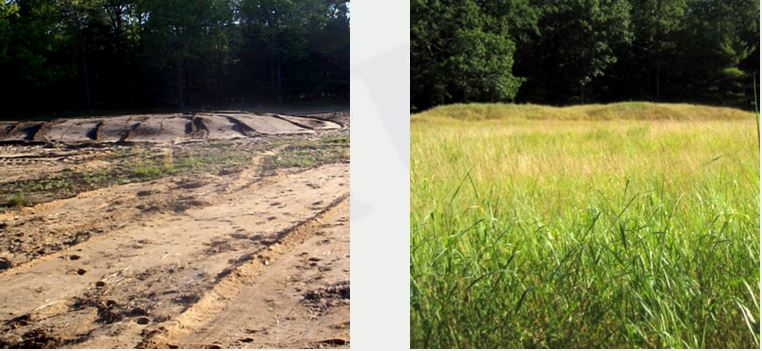Ecological reuse returns polluted or otherwise disturbed lands to a functioning and sustainable use by increasing or improving habitat for plants and animals.
“Ecological land reuse” is a broad term that encompasses a number of interrelated activities including the reconstruction of antecedent physical conditions, chemical adjustment of the soil and water, and biological manipulation which includes the reintroduction of native flora and fauna.
Why restore disturbed or contaminated lands?
Habitat preservation is key to an ecosystem’s health and well-being, and there is a growing awareness that restoration is essential to recover ecosystems that have been degraded or destroyed. Furthermore, contaminated or disturbed sites that have been restored are once again available for public use and enjoyment.
The public’s interest in the renewal of natural ecosystems has grown steadily during the past few decades. EPA’s Superfund Redevelopment Program assists communities in returning some of the nation’s worst hazardous waste sites to safe and productive uses. While the Agency works to protect human health and the environment, EPA also works with communities and other partners to consider future uses for restored Superfund sites. Many sites are now being used as parkland, agricultural land, residences and commercial space.
Ecological reuse can be incorporated into site remediation plans for Superfund sites because it provides habitat for wildlife and is not considered beautification or enhancement. Returning contaminated sites to beneficial use not only allows local communities to reclaim lost land – it can also lead to increased property values, a higher tax base, and protected open space. In addition, when local interests have a stake in the revitalized property, the chances are greater for continued productive use.
Benefits of Ecological Land Reuse:
- Provides wildlife habitat
- Sequesters carbon
- Remediates and beneficially reuses damaged lands
- Improves property values
- Improves image
- Reduces wind and water erosion of contaminants
- Protects water resources
- Creates green spaces and corridors
- Improves the community by removing stigma associated with prior waste sites

